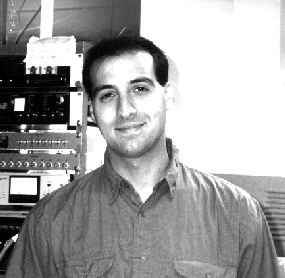
 |
Assistant Professor of Physics B.A., University of Chicago (1984) Ph.D., Princeton University (1991) Experimental Particle Astrophysics, Dark Matter, Low-temperature Detectors, Particle Physics
Numerous observations and theoretical models indicate that most of the Universe does not glow in the form of stars or other familiar objects, but rather that it is dark. This dark matter is inferred by its apparent gravitational effects on a wide range of distance scales, from galaxies to super-clusters. Deepening the mystery is the constraint from Big Bang Nucleosynthesis that baryons alone cannot account for all the mass required by these observations. Non-baryonic dark matter is also needed to achieve the critical density required by the standard cosmology for the Universe to be stable. So, we are faced with the problem that we cannot account for most of the matter in the Universe, nor can we even say what it is.
The goal of my research is to determine whether a class of particles called WIMPs (weakly-interacting massive particles) is the dark matter. Why WIMPs? Because they would have been produced thermally in the early Universe and, for a critical density, the Hubble rate requires that they have a weak cross section and that they decoupled from the primordial soup when they were non-relativistic. Not only do such particles reconcile the cosmic microwave "snapshot" of a smooth early Universe with the clumpiness observed today, but they also emerge from extensions to the Standard Model motivated purely by particle physics.
In collaboration with Berkeley's Center for Particle Astrophysics and others, I am building a terrestrial experiment to detect these particles as we drift through them in the Galactic halo. We use germanium detectors that are sensitive to WIMPs via elastic scattering off nuclei. With expected event rates in the range 1 to 0.001 events/kg/d, our challenges are to maximize detector mass and minimize particle backgrounds. A unique capability of our detectors is photon background rejection, achieved with simultaneous heat and ionization measurements — photons recoil from electrons and are thus more ionizing than WIMPs.
The thermal measurement requires that the detectors operate at 20 mK, while background considerations require a low-activity environment. Therefore we built a shielded high-purity cryostat cooled by a commercial dilution refrigerator. Our initial experiment, consisting of one kilogram of detectors housed in an underground site, should reach a sensitivity of 0.3 events/kg/d, which just begins to probe the interesting region of parameter space.
We will next relocate the experiment to a much deeper site for better shielding from cosmic rays, and increase the detector mass to at least 10 kg. To complement that work I am constructing a low-temperature laboratory here on campus to further develop WIMP detectors. Both better sensors and a wider variety of detector nuclei will almost certainly be required to definitively answer the question: Do WIMPs make up the dark matter?
Representative Publications